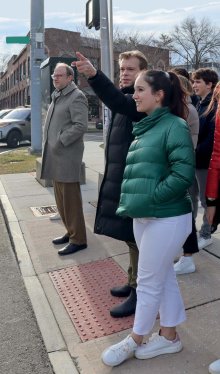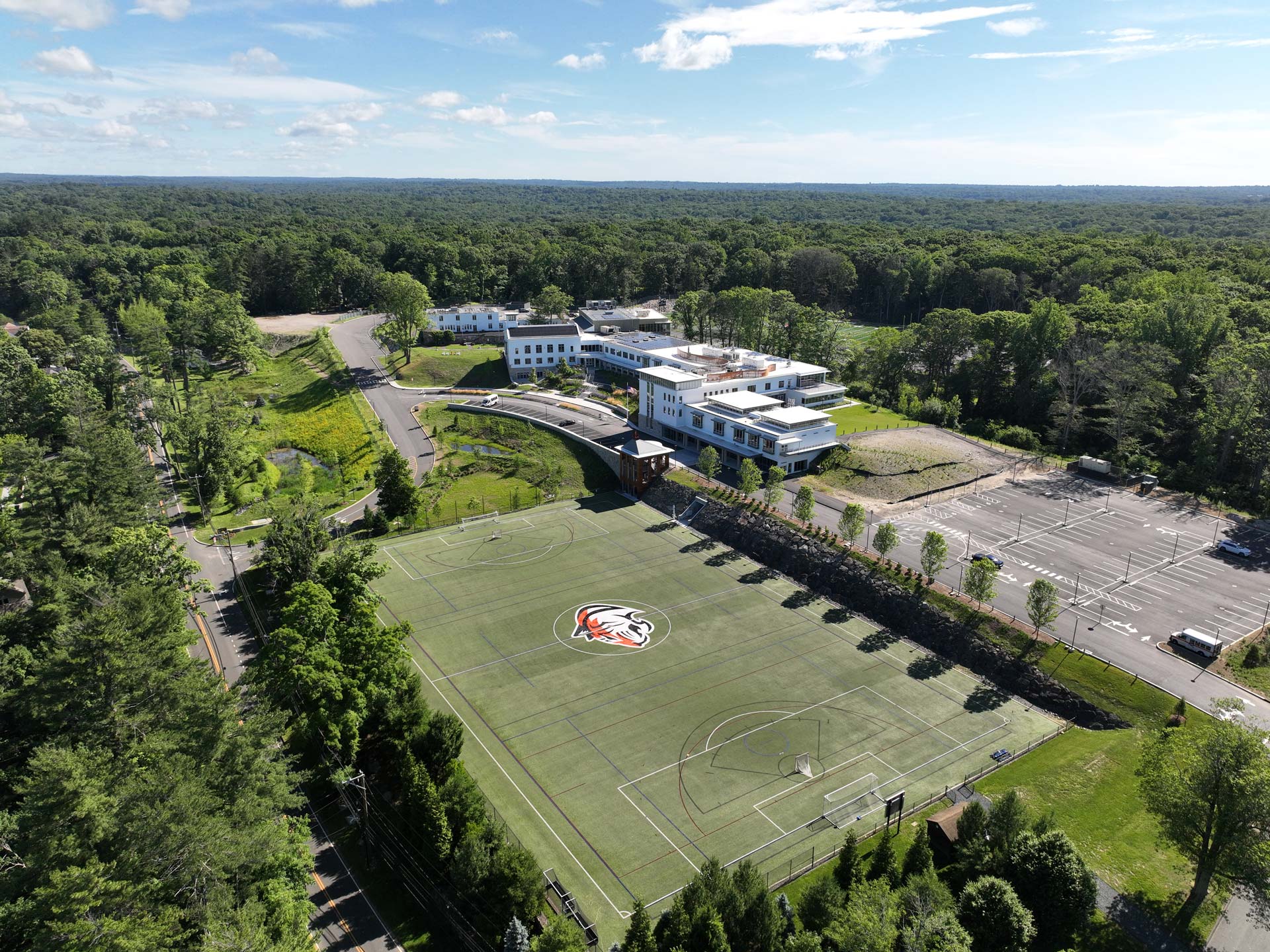
BY JANE TORTORELLA ’23
Each Upper School academic department offers Advanced Applied courses. These GCDS courses extend beyond Advanced Placement (AP) standards found in many high schools, and require significant content and skill mastery, along with strong application and independent research.
In this article, recent graduate Jane Tortorella writes about her experience of creating and taking Advanced Applied Economics and Engineering, a yearlong course taught by Dr. Andrew Ruoss, Upper School Academic Dean, and Gordie Campbell, Head of Creative Applied Technologies Program. I never expected to design and take an interdisciplinary Computer Science and Economics class during high school. Three years ago, I would not have even understood how those two topics could intersect. Attending high school at GCDS gave me an opportunity to develop and experience classes that I hadn’t imagined being offered in a high school setting.
In the GCDS Upper School, students have the opportunity to have a voice in the growing academic program. One way we do that is by joining the Curriculum Leadership Council. As a founding member of the GCDS Curriculum Leadership Council, I had a front row seat to the design and implementation of advanced courses in the high school. We kept a few guiding principles in mind as we discussed curriculum development: interdisciplinary collaboration, deep independent learning, and applicability to real life.
Advanced Applied Economics and Engineering is a course born from the Curriculum Council. My Econ teacher and my Computer Science teacher approached me to gauge interest in a class that would combine the two subjects. I was immediately hooked by the description. It was unlike any other class I had taken: co-taught by teachers from different departments, student-driven, bolstered by field visits and interviews with professionals.
In August going into my senior year, I received my course schedule. I was thrilled to see Advanced Applied Economics and Engineering printed on the page. It was meaningful to see something that I had worked on at length in the Curriculum Council come to fruition with 11 total students enrolled. As a group, we decided to focus the class on the housing crisis in the United States, an ongoing societal issue with complex factors.
During the first semester, we spent time familiarizing ourselves with the different sectors of the housing crisis and tools for data visualization. The goal was to cultivate necessary skills to work toward providing possible solutions.
We read Fixer Upper: How to Repair America’s Broken Housing Systems by Jenny Schuetz, a Senior Fellow at the Brookings Institution. I learned about government structure, racial discrimination, and rent burden. Dr. Schuetz met with our class, and we interrogated her use of datasets, asked for guidance on understanding the relationships between local and federal governments, and received recommendations for displaying data. We structured the meeting around engaging with her argument and asking specific questions based on our own research. After our meeting with her, I was able to create compelling visualizations explaining the role of homelessness in the housing crisis.
We also worked with the author of Homelessness Is a Housing Problem: How Structural Factors Explain U.S. Patterns, by Gregg Colburn. This book contained many different maps, line charts, and bar graphs, and prompted a series of “data demos” in the classroom so that we could attempt to create similar visuals. I had experience with Tableau from my data science internship, so I showed my classmates how to use the tool and its potential applications for our project. I learned from others how to use geographic heat mapping, online graphing tools, and coding languages to organize and visualize datasets. The data demos were what encouraged and cemented our efficient collaboration.
Excited to pick another professional’s brain, I asked Professor Colburn from the University of Washington about data accuracy, having found discrepancies in my own study of homelessness. He offered me new sources and strategies, helping me break out of a research rut.
By the second semester, the class was fluent in Microsoft Excel and SQLite and ready to use our data science skills to form a compelling argument. We decided to narrow our focus to the lack of affordable housing in Greenwich, CT. We broke up into small groups, each tackling a different topic. I worked with one other student to learn about the intersection of the town budget and tax base with housing and zoning. I spoke with First Selectman Fred Camillo about his priorities when creating the budget, Tax Assessor Lauren Elliot about her grand lists, Professor Scott Lacy of Fairfield University about his research of Greenwich’s demographics, and private real estate developers about how they leverage projected tax revenue to propel their projects through zoning regulations.
As a culminating experience, a few classmates and I met with a member of the Greenwich Planning and Zoning Commission to present our findings and potential solutions. I received incredible responses and feedback. I was very inspired by this—it was one of the first times that I felt my high school work was making a tangible difference in my community. The fact that this course is still in its infancy only made my work more purposeful and challenging. It remains the favorite class I have ever taken.
This fall, I will be attending MIT and am excited to look for classes and research opportunities like this that are solution-oriented, interdisciplinary, and meaningful to local communities. I hope to continue exploring the relationship between engineering and public policy, building on the creative and collaborative experience I had this year in Advanced Applied Economics and Engineering.











.JPG&command_2=resize&height_2=85)





.jpg&command_2=resize&height_2=85)




